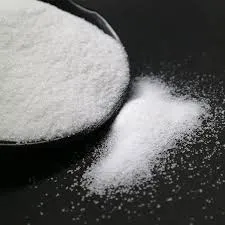The Molecular Weight of Sodium Thiocyanate Importance and Applications
Sodium thiocyanate (NaSCN) is an inorganic compound that plays a crucial role in various scientific and industrial applications. Understanding its molecular weight is essential for numerous fields including chemistry, biology, and engineering. The molecular weight of sodium thiocyanate is typically calculated to be approximately 81.07 g/mol. This information helps researchers and professionals in precise calculations and formulations in their respective areas.
Composition and Structure
Sodium thiocyanate is composed of sodium (Na), sulfur (S), carbon (C), and nitrogen (N) atoms. The compound contains one sodium ion (Na^+) and one thiocyanate ion (SCN^-). The thiocyanate ion itself is made of a sulfur atom bound to a carbon atom, which is bound to a nitrogen atom. The combination of these elements contributes to the overall molecular weight of the compound.
The molecular structure of sodium thiocyanate reveals its polar character, which is significant in understanding its solubility and reactivity. The polar nature arises from the difference in electronegativity between the nitrogen and the sulfur atom, making the compound soluble in water. This property is critical for its applications in various chemical reactions and processes.
Importance in Chemical Reactions
In organic chemistry, sodium thiocyanate is often used as a reagent in various synthesis reactions. For example, it can be employed in the synthesis of thiocyanates from alkyl or aryl halides. The knowledge of its molecular weight aids chemists in accurately measuring the amount needed for a reaction, thus ensuring the efficiency and yield of the desired product.
sodium thiocyanate molecular weight

Moreover, sodium thiocyanate can be used as a precipitating agent in analytical chemistry, where it helps to identify the presence of certain metal ions. In these contexts, knowing the molecular weight becomes critical for calculations involving stoichiometry, enabling precise quantification of reactants and products.
Biological Applications
Apart from its industrial significance, sodium thiocyanate is also found in biological systems. It is known to play a role in the metabolism of cyanide in the human body, thus acting as a detoxifying agent. The molecular weight is important in pharmacology and toxicology since it directly relates to the dosage and distribution of the compound within biological systems. Understanding its molecular interactions can lead to better insights into its therapeutic potential and safety profiles.
Environmental and Safety Considerations
While sodium thiocyanate has beneficial applications, it is essential to acknowledge its potential hazards. Exposure to high concentrations can lead to toxic effects, necessitating safety measures in environments where it is utilized. Knowledge of its molecular weight assists in developing guidelines for handling and disposing of the compound, ensuring compliance with safety regulations.
Conclusion
Sodium thiocyanate is a compound with diverse applications across various fields, including chemistry, biology, and environmental science. Its molecular weight, approximately 81.07 g/mol, is a fundamental property that aids in various calculations and applications. As research and technology advance, the significance of understanding the molecular properties of compounds like sodium thiocyanate will only grow, highlighting the importance of rigorous scientific inquiry and responsible usage in both industrial and research settings. Whether in the laboratory or the human body, a comprehensive understanding of sodium thiocyanate’s molecular weight and its implications can lead to better outcomes and innovations across multiple disciplines.

